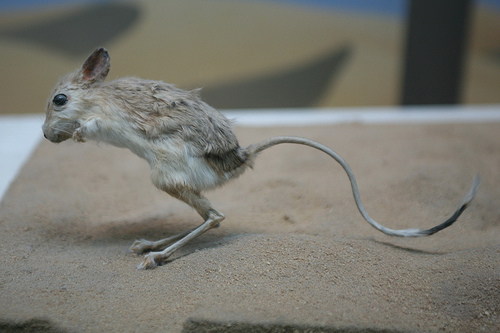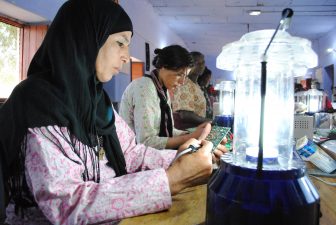 Modern agriculture practices in Israel have caused population shifts in animal species.
Modern agriculture practices in Israel have caused population shifts in animal species.
Is a border line simply a virtual line appearing on the map? If so, why is it that Israeli rodents are more cautious than Jordanian rodents? Why is it that there are more ant lions in Israel than in Jordan? And how come there are more reptile species in Jordan than in Israel?
A series of new studies at the University of Haifa’s Department of Environmental and Evolutionary Biology and the University of Haifa-Oranim’s Faculty of Sciences and Science Education are exploring the answers.
The series of studies, which have been carried out in cooperation with Jordanian researchers, has examined a variety of reptile, mammal, beetle, spider and ant lion species on either side of the border in the Arava region.
The first study inspected the reptile population and revealed that the number of reptiles is similar on both sides, but the variety of species in the sandy areas of Jordan is significantly higher than the variety found in the sands of Israel. A second study revealed that Israeli gerbils are more cautious than their Jordanian friends, while a third study showed that the funnel-digging ant lion population in Israel is unmistakably larger than in Jordan.
According to the researchers, the differences between Israel and Jordan are primarily in the higher level of agriculture and the higher number of agricultural farms in Israel as opposed to Jordan’s agriculture that is primarily based on nomadic shepherding and traditional farming.
The agricultural fields on the Israeli side of the border not only create a gulf between habitats and thereby cause an increase in the number of species in the region, but they also hail one of the most problematic of intruders in the world: the red fox.
Environmental engineers
On the Jordanian side, the red fox is far less common, so that Jordanian gerbils can allow themselves to be more carefree. The higher reproduction rate of ant lions on Israel’s side is also related to the presence of another animal: the Dorcas gazelle.
This gazelle serves as an “environmental engineer” of a sort, as it breaks the earth’s dry surface and enables ant lions to dig their funnels. The Dorcas gazelle is a protected animal in Israel, while hunting it in Jordan is permitted and compromises the presence of the Jordanian ant lions’ soil engineers.
The Israeli team includes Dr. Shanas and research students Idan Shapira and Shacham Mitler, who set out to reveal whether the border – unknown to the species – could affect differences between them and their numbers on either side of the frontier, even though they share identical climate conditions.
“The current studies clearly display the influence that man has on nature – for better and for worse. Over the past years, advanced agricultural technology has been transferred from Israel to Jordan; and we must strengthen our understanding of the influences that modern agriculture has on nature, so that we can assist in preserving the large variety of species in the Arava region,” Dr. Shanas concludes.
[Image via nostri imago]




2 thoughts on “Why Israeli Rodents Are More Cautious Than Jordanian Ones”
Comments are closed.